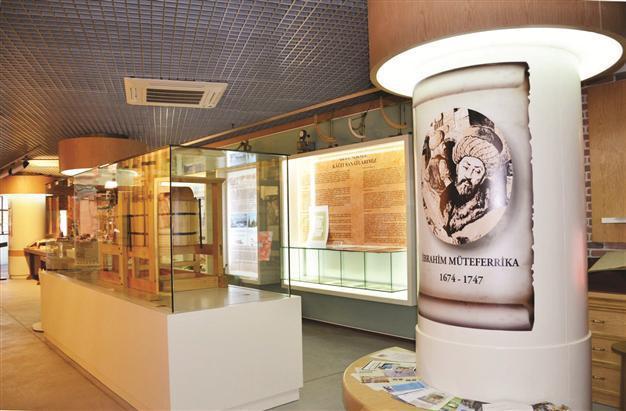Paper production continues traditionally at museum in Turkey's Yalova
YALOVA - Anadolu Agency

The İbrahim Müteferrika Paper Museum opened in May in Yalova. Paper is produced with traditional methods in the museum by using tree branches, and visitors alsoable to join in this process.
Paper production still continues traditionally at the İbrahim Müteferrika Paper Museum, which was opened this year by the municipality in the northwestern province of Yalova. In an atelier established inside the museum, paper is produced with traditional methods by using tree branches, and visitors are also able to join in this process.
Art historian Aytekin Vural, who is responsible for the museum, said the first publisher in the Ottoman period, named İbrahim Müteferrika, constructed a printing atelier in Yalova’s Elmalık village in order to meet the need for paper for the publishing facility, which he opened in the second half of the 18th century. He said paper production had continued in the atelier for nearly 20 years.
Vural said pruned tree brunches had been used in the paper production in the Yalova printing house, and in order to revive this traditional method and tell “the adventure of paper,” they had decided to establish the museum.
“Then we decided to produce paper in the museum and focused on this atelier that we opened inside the museum. First of all, we searched the Ottoman archives and examined the notebooks of people worked in the paper production. We tried to document the registers of İbrahim Müteferrika. Later on, we established the museum and started producing paper. The Yalova Municipality İbrahim Müteferrika Paper Museum opened on May 25. Within such a short time, we have received 10,000 visitors, which was very pleasing for us. Around 5,000 visitors came from 80 countries, led by the European countries and the United States. The museum drew visitors from all 81 provinces of Turkey, too,” he added.
“Due to the level of interest in the museum, we prepare papers one day in advance, because 300 to 400 people come to the museum every day. Visitors produce paper here and take it as a souvenir,” Vural said, adding that their main goal was to show people “traditional methods.”
Everything is hand-madeHe also added that they cut the necessary tree and plant branches and brought them to the museum without damaging the environment.
“None of tree branches cut by the municipality go to waste. The branches are being evaluated for the paper production in the museum. And in this way we prevent environmental pollution and do not have difficulty in finding material. In traditional paper production, paper is completely hand made. We produce cellulose without using any preservative, and we hang the paper to dry. In modern paper production, chemical materials are used in cellulose production, but here everything is hand made. The goal of the museum is to make paper a brand in our country and to present it to the world with the name ‘Yalova paper’ as a souvenir. We believe that Yalova will be remembered by paper, just as it was 269 years ago,” Vural said.
He stressed that they did not use chemical materials at any point of the paper production, and turned cut tree branches into paper by boiling and beating them for 10 hours in mortars.
Some artists want particularly white papers, Vural said. “We benefit from the Ottoman documents to give them what they want. Gelibolulu Mustafa Ali has a book featuring the Ottoman professions. Based on this book, we made different trials in different colors. We began producing white paper by boiling branches with limestone, yellow paper with curcuma and red paper with tea. We obtain even colors without using chemical materials,” he said.
